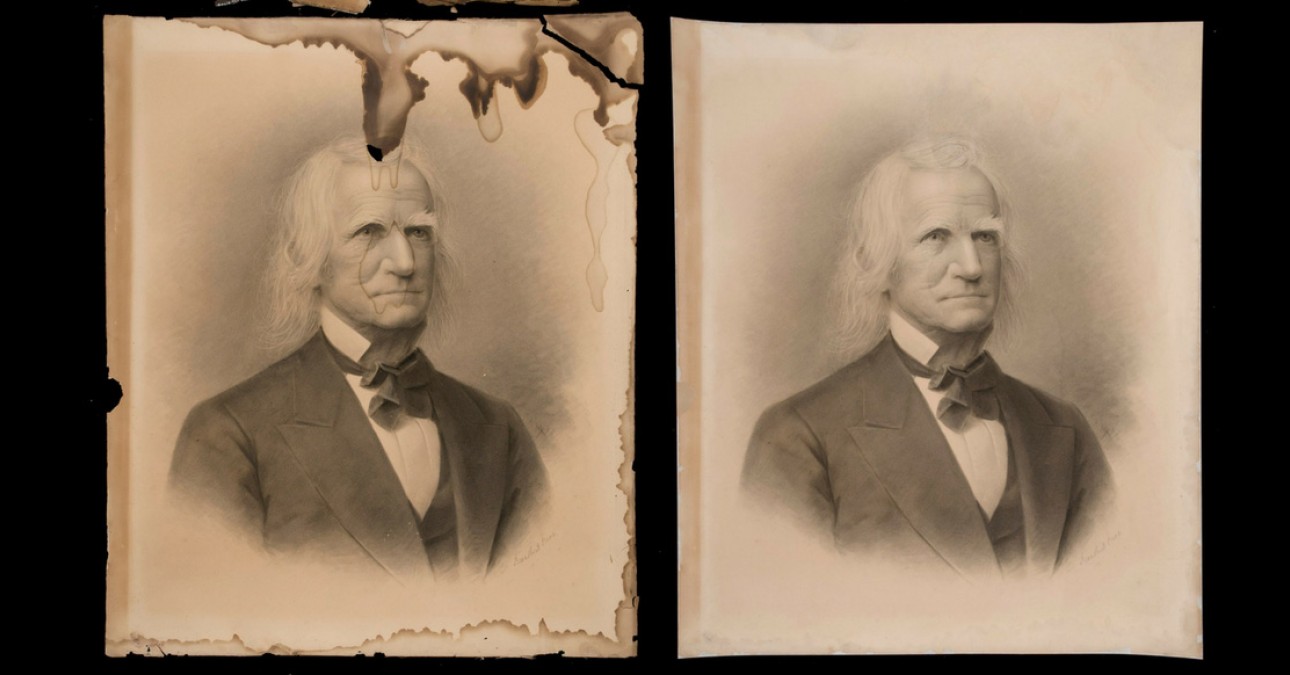
Treatment FOCUS: A Damaged Crayon Portrait from the Woodlands
Walk through West Philadelphia toward 39th Street and Woodland Avenue, and you’ll come across a landscape set apart from the industrial and residential areas that characterize much of the city. The Woodlands cemetery looks the same as it did in the 1840s, when Eli K. Price decided to build it on a former estate. He planned winding paths and planted thousands of evergreens, envisioning a beautiful, park-like space that would become a destination for Victorian outings. Today, Philadelphians living in the neighborhood that grew around The Woodlands still use it as a park, picnicking and playing among memorials to city celebrities such as artist Thomas Eakins (1844-1916), abolitionist Mary Grew (1813-1896), and surgeon Samuel Gross (1805-1884)—just as the cemetery’s founder intended.
Paper & Photograph Conservator Jessica Keister reducing stains on the suction table
The Woodlands recently brought a c. 1865 crayon portrait of Price to CCAHA. The portrait had been exposed to water, which left a disfiguring dark brown stain that extended from the top edge into the sitter’s head and spread across the upper right corner. A small hole, or loss, was located at the bottom of the stain, on the sitter’s head, and a break in the paper extended from this loss to the top edge of the portrait. The paper was brittle and discolored from light exposure, and it had a layer of surface dirt across the front.
Keister inpainting losses at an easel
CCAHA Paper & Photograph Conservator Jessica Keister first carefully removed the canvas lining from the back of the portrait using a scalpel blade. She then washed the piece with deionized water to reduce discoloration and acidity in the paper. To reduce the stains as much as possible, she placed the portrait on the suction table and applied alkaline water and various organic solvents, as well as a dilute bleach solution. Next, Keister filled the losses with paper and inpainted them with ground pigments. She reduced the appearance of any remaining stains using pigments and pastels.
The portrait will be fastened into a sealed package and placed into its original frame. This ornamented and gilded frame had been seriously damaged; the cast composition elements of the ornamentation were lost and the red velvet-covered liner badly degraded. Mike Podmaniczky, an outside consultant and wooden artifacts conservator, will recreate the lost elements by casting with molds from existing, intact areas. He will regild these restored elements with metal leaf and replace the degraded velvet so that the frame can be used again.